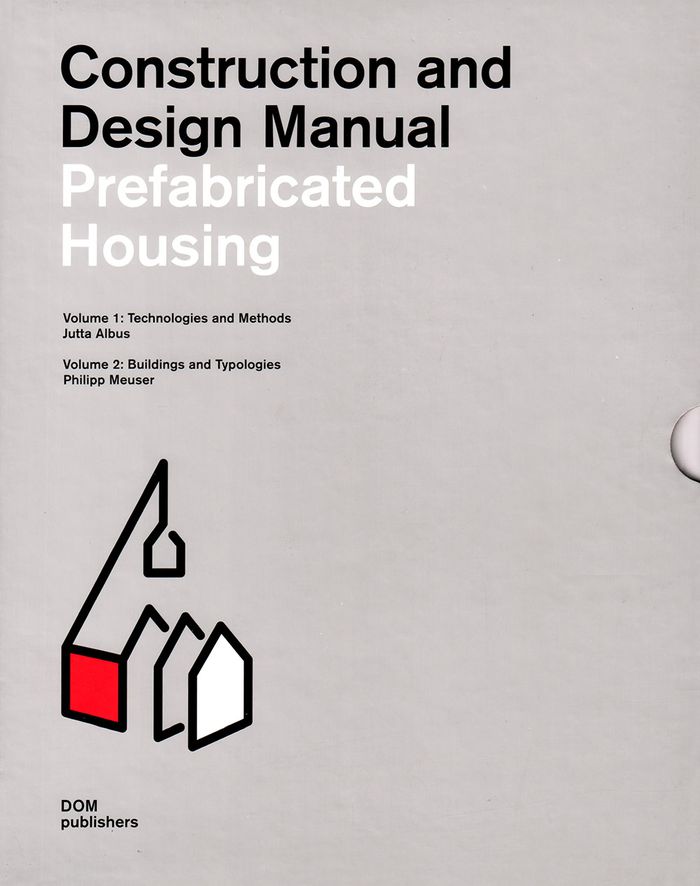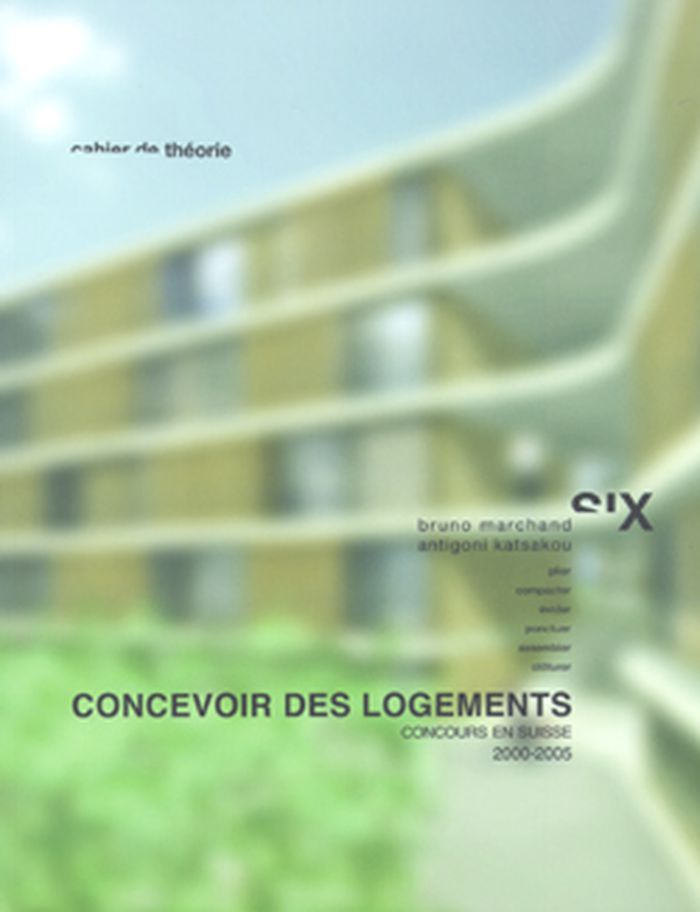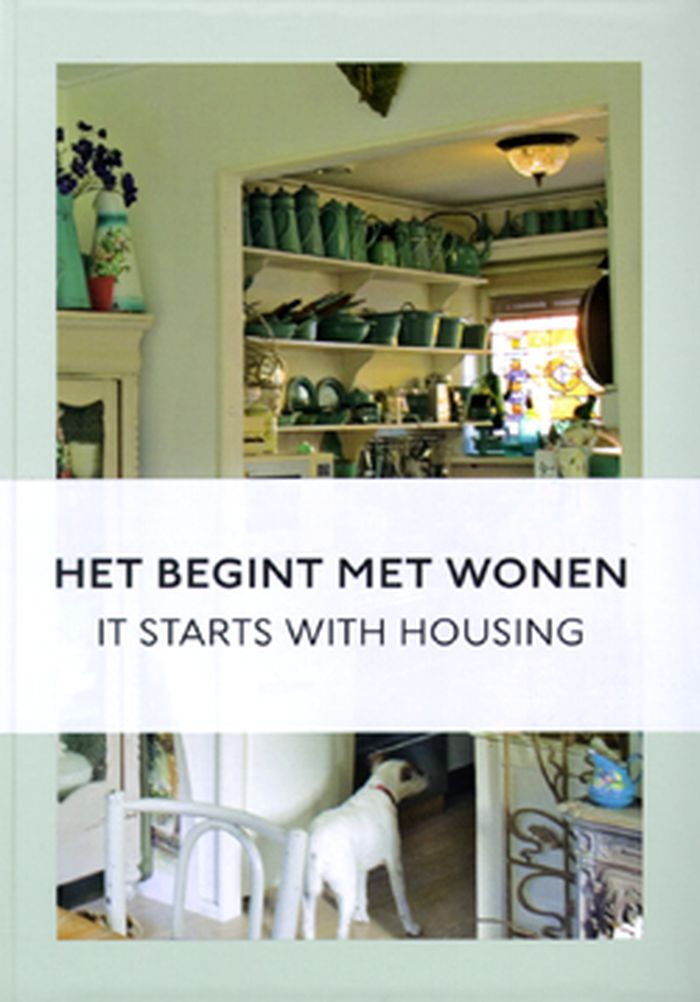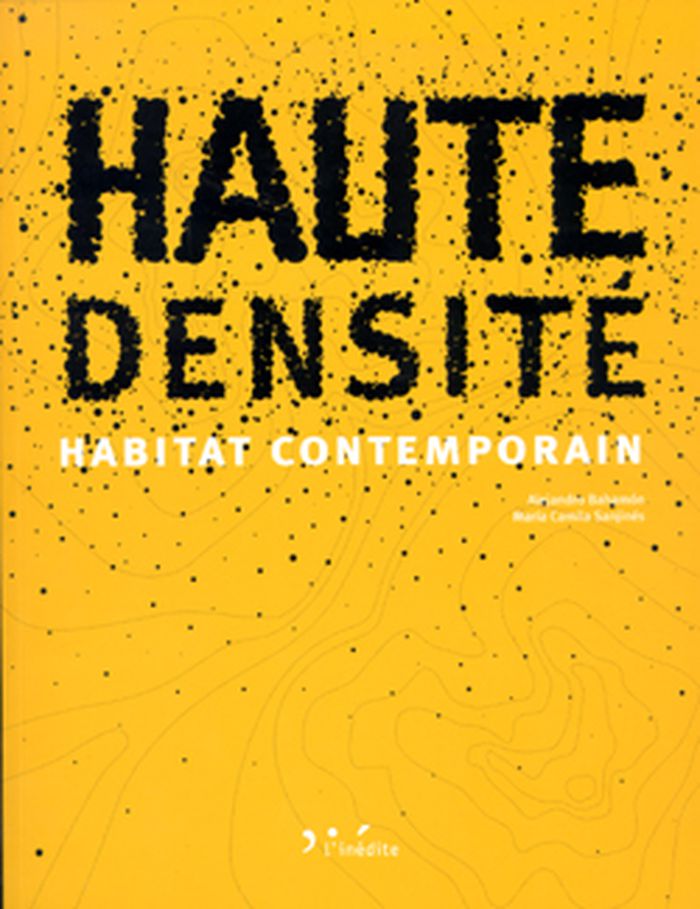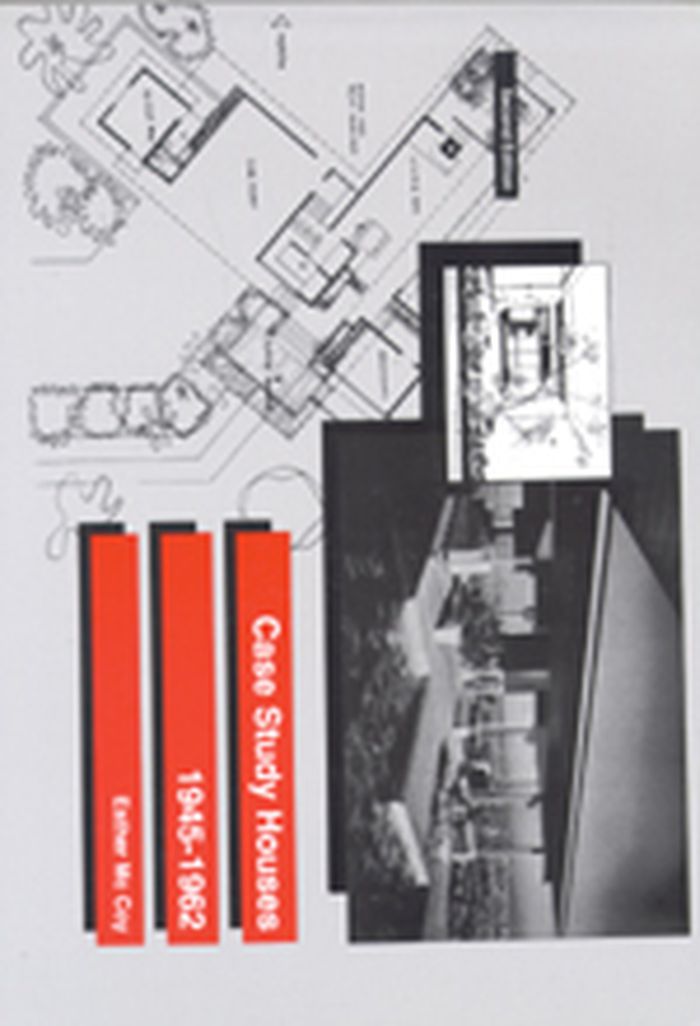$130.00
(available to order)
Summary:
Prefabricated housing has long since ceased to mean the disfigurement of the urban landscape with monotonous grey boxes. Particularly in Central Europe and Russia, modern assembly methods and 100 years of experience in planning prefabricated buildings and constructing with large panels are experiencing a renaissance. This construction manual examines the potential of(...)
Prefabricated housing: construction and design manual
Actions:
Price:
$130.00
(available to order)
Summary:
Prefabricated housing has long since ceased to mean the disfigurement of the urban landscape with monotonous grey boxes. Particularly in Central Europe and Russia, modern assembly methods and 100 years of experience in planning prefabricated buildings and constructing with large panels are experiencing a renaissance. This construction manual examines the potential of prefabricated housing on structural, historical and architectural grounds. In addition to an insight into the methods of production and assembly, roughly twenty selected examples are presented in large-format photographs, detailed plans and diagrams, providing a contribution to the discussion on affordable housing. 2 volumes in slipcase: Vol. 1: Technologies and Methods, Vol. 2: Buildings and Typologies
Collective Housing
books
The urban housing handbook
$175.99
(available to order)
Summary:
The handbook provides graphic representations and analysis of 30 urban case studies from around the world. These range from the London town house to apartments in Chicago and New York, taking in other European, South American, North African, and Asian examples. In each chapter, a housing type is fully explored through a traditional case study and then a more modern(...)
Collective Housing
February 2009, West Sussex
The urban housing handbook
Actions:
Price:
$175.99
(available to order)
Summary:
The handbook provides graphic representations and analysis of 30 urban case studies from around the world. These range from the London town house to apartments in Chicago and New York, taking in other European, South American, North African, and Asian examples. In each chapter, a housing type is fully explored through a traditional case study and then a more modern example that demonstrates how it has been reinterpreted in a contemporary context.
books
February 2009, West Sussex
Collective Housing
$62.00
(available to order)
Summary:
Ce cahier de théorie propose une étude de l'architecture des logements collectifs projetés dans les concours suisses entre 2000 et 2005. Leur analyse critique, non exhaustive, souligne les tendances prédominantes - notamment organiques - et révèle, en les mettant en perspective, les préoccupations actuelles concernant l'innovation et l'adaptation spatiale à l'évolution(...)
Collective Housing
January 2009, Lausanne
Concevoir des logements concours en Suisse 2000-2005
Actions:
Price:
$62.00
(available to order)
Summary:
Ce cahier de théorie propose une étude de l'architecture des logements collectifs projetés dans les concours suisses entre 2000 et 2005. Leur analyse critique, non exhaustive, souligne les tendances prédominantes - notamment organiques - et révèle, en les mettant en perspective, les préoccupations actuelles concernant l'innovation et l'adaptation spatiale à l'évolution des modes de vie. Cette étude montre en particulier que les coopératives d'habitation et les investisseurs privés ne considèrent plus la question du logement qu'à l'aune exclusive des subventions ou des aides financières: la qualité des espaces domestiques est aujourd'hui devenue une question centrale de leurs réflexions.
Collective Housing
$75.00
(available in store)
Summary:
A particular feature of Dutch social housing is their development and operation by housing corporations. At the beginning of 2008, one of these corporations the ‘Woonmaatschappij' merged with another called ‘Ymere.' This publication takes stock of all the various buildings that they control while also celebrating a tradition that offers occupants the chance of good(...)
Ymere: it starts with housing
Actions:
Price:
$75.00
(available in store)
Summary:
A particular feature of Dutch social housing is their development and operation by housing corporations. At the beginning of 2008, one of these corporations the ‘Woonmaatschappij' merged with another called ‘Ymere.' This publication takes stock of all the various buildings that they control while also celebrating a tradition that offers occupants the chance of good quality housing, healthy lifestyles, individuality and growth.
Collective Housing
$54.95
(available to order)
Summary:
Cet ouvrage ne rassemble pas les habitats de plus grande densité dans le monde mais il sélectionne ceux qui proposent de nouvelles solutions liées à un contexte spécifique et qui analysent en profondeur la façon de résoudre, pour chaque cas, la complexité de ce type d'architecture.
Collective Housing
November 2008, Paris
Haute densité : habitat contemporain
Actions:
Price:
$54.95
(available to order)
Summary:
Cet ouvrage ne rassemble pas les habitats de plus grande densité dans le monde mais il sélectionne ceux qui proposent de nouvelles solutions liées à un contexte spécifique et qui analysent en profondeur la façon de résoudre, pour chaque cas, la complexité de ce type d'architecture.
Collective Housing
books
$72.00
(available to order)
Summary:
Presented here are recent collective housing projects - in phase of development or execution through 2007 - that are characterised by their use of densification models in combination with good architecture. Many of the projects incorporate other uses, alongside residential ones in their programmes. This contributes both to density and intensity of use in respective(...)
Collective Housing
January 2008, Vitoria-Gasteiz
A+T Density Projects. 36 New Concepts on Collective Housing
Actions:
Price:
$72.00
(available to order)
Summary:
Presented here are recent collective housing projects - in phase of development or execution through 2007 - that are characterised by their use of densification models in combination with good architecture. Many of the projects incorporate other uses, alongside residential ones in their programmes. This contributes both to density and intensity of use in respective environments, in turn creating new urban nuclei and providing a solution to strained resources. Fully illustrated with plans, diagrams and elevations, ‘Density Projects' includes works from the likes of; BIG, Jean Nouvel, Kohn Pedersen Fox, MGM, No.MAD, Stephen Holl, Studio Gang Architects and VMX architects.
books
January 2008, Vitoria-Gasteiz
Collective Housing
Case Study Houses 1945-1962
$35.95
(available to order)
Summary:
Since the popular Museum of Contemporary Art exhibit of 1989, Blueprint for Modern Living, much attention has been paid to the pioneering work done by the architects of the Case Study Program. Sponsored by John Entenza's Art & Architectue Magazine, the Case Study Houses program brought new thinking, techniques, and materials to post-war California house building. Contains(...)
Case Study Houses 1945-1962
Actions:
Price:
$35.95
(available to order)
Summary:
Since the popular Museum of Contemporary Art exhibit of 1989, Blueprint for Modern Living, much attention has been paid to the pioneering work done by the architects of the Case Study Program. Sponsored by John Entenza's Art & Architectue Magazine, the Case Study Houses program brought new thinking, techniques, and materials to post-war California house building. Contains the work of Charles Eames, Eero Saarinen, Craig Ellwood, Pierre Koenig, Richard Neutra, William Wurster, and others.
Collective Housing
books
Floor plan atlas : housing
$152.00
(available to order)
Summary:
Second revised and enlarged edition.
Floor plan atlas : housing
Actions:
Price:
$152.00
(available to order)
Summary:
Second revised and enlarged edition.
books
May 1997, Basel
Collective Housing
books
$60.25
(available to order)
Summary:
Bi-annual Australian publication. This issues examines the problem of the commercialisation of inner cities.
Content form technique 2 : housing & city
Actions:
Price:
$60.25
(available to order)
Summary:
Bi-annual Australian publication. This issues examines the problem of the commercialisation of inner cities.
books
January 1996, Sydney
Collective Housing
books
Park Hill : what next?
$22.95
(available to order)
Summary:
Explores by way of Park Hill Estate in Sheffield, the broader concerns about public housing.
Collective Housing
January 1996, London
Park Hill : what next?
Actions:
Price:
$22.95
(available to order)
Summary:
Explores by way of Park Hill Estate in Sheffield, the broader concerns about public housing.
books
January 1996, London
Collective Housing
